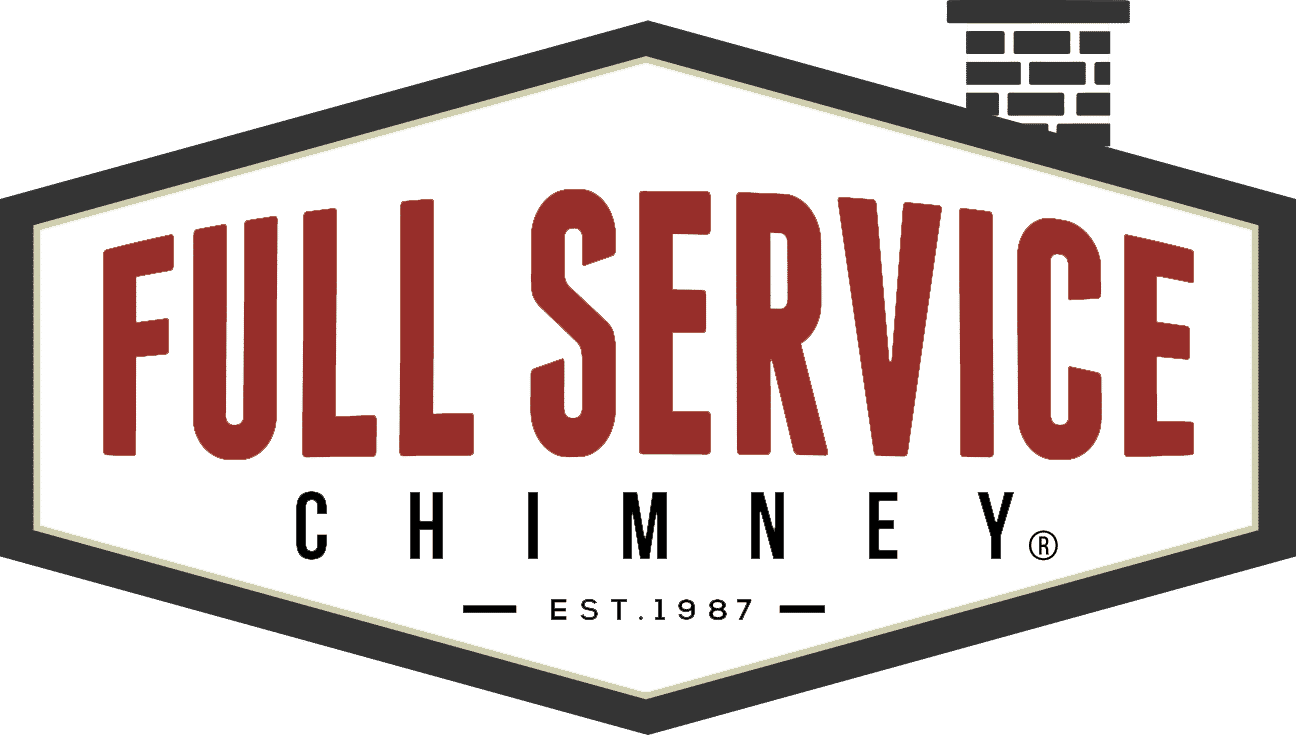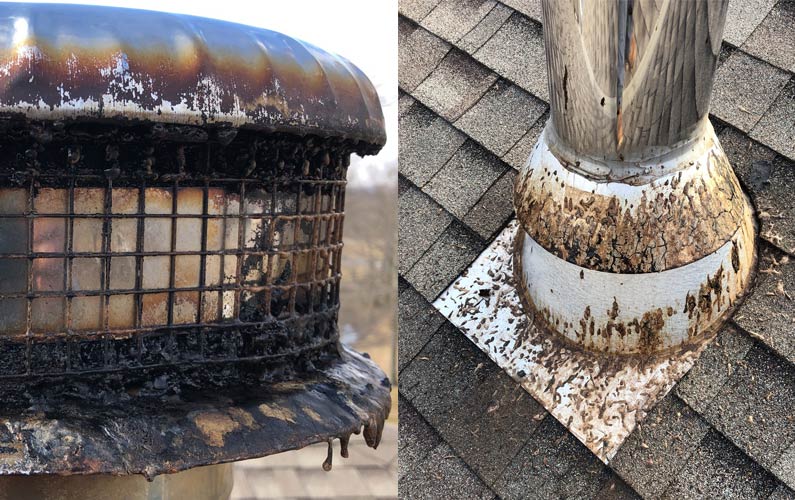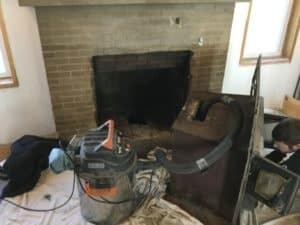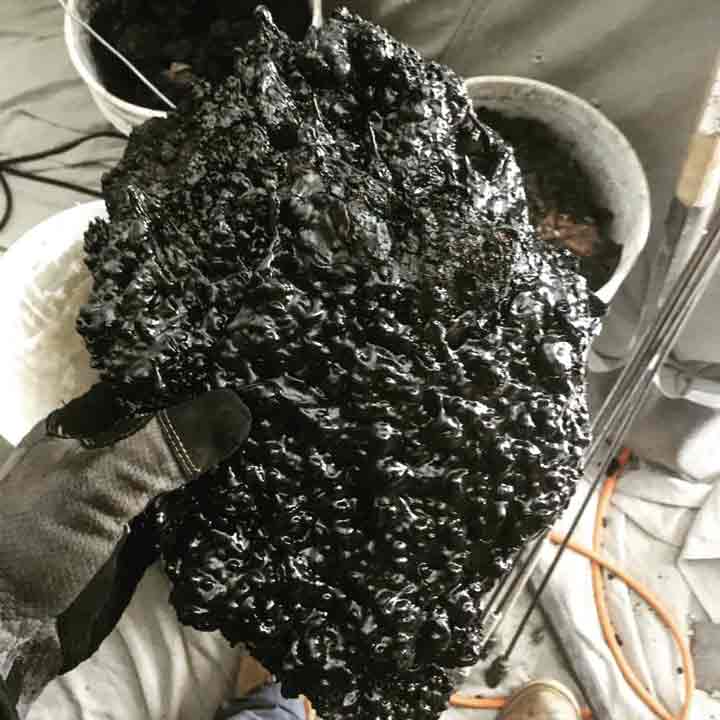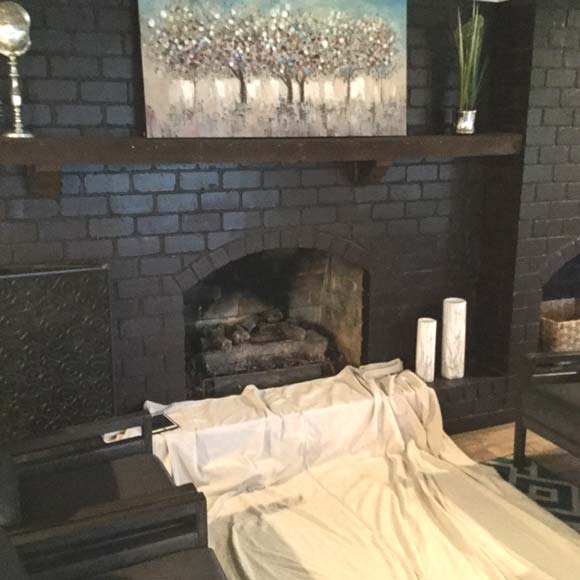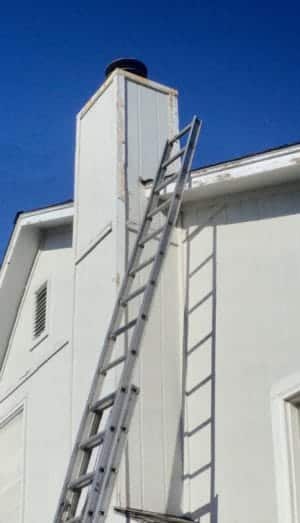Can I clean my own chimney? If you’re asking whether DIY chimney cleaning is a good idea or not, then you’re in the right place. The short answer is yes, you could clean your own chimney, but the more important question to ask yourself is: Should I clean my own chimney?
While some chimney maintenance is possible for the DIYer, or Do It Yourself Enthusiast, a complete chimney cleaning and inspection should be performed at least once a year by a Certified Chimney Sweep.
Things to Consider Before Trying to Clean Your Own Chimney & Fireplace
Homeowners who want to reduce creosote build-up in between annual cleanings may do a quick sweep in between the professional visits.
Dust control and Fire Safety, are essential in every chimney sweeping. If the chimney gets clean but the home gets dirty in the process, then that’s an intolerable outcome.
Controlling the dust and debris during and after the process is necessary to make sure the home doesn’t get covered in dirty, grimy soot.
Professionals do this every day so keeping a clean workspace becomes second nature to the trained Chimney Sweep.
Like the pros, if you decide to do some intermittent chimney cleaning maintenance yourself, then you’ll likely need to purchase a few items.
At a minimum, you’ll need tarps, brushes, and at least one shop vacuum. These tools work together in keeping dust in its place. Read on to learn other considerations for do it yourself chimney cleaning.
Cost Concerns
The items needed to successfully clean a chimney can get quite expensive. You’ll have to judge for yourself if the juice is worth the squeeze.
Chimney Sweep Tools:
- Large Heavy-Duty Cloth Tarps
- Commercial Grade Shop Vacuums with Extension Hose
- Professional Respirator Mask
- Eye Protection/Safety glasses
- Rotary Tool Kit
- Rotary Brushes
- Hand Brushes
- Extension Rods
- Gloves/Booties
Ladders could also be needed to reach the outside of the chimney from the roof. (See below *We do not recommend this unless you are trained in roof climbing safety).
Often insurance companies need proof of annual inspection and chimney cleanings. So you may eventually find yourself between a rock and a hard place if you purchase all the right gear and take the time to learn how to clean a chimney yourself, but are still required to provide proof of a professional inspection and chimney cleaning.
However, for the vast majority of people, purchasing all the proper safety gear and tools may not be a viable option. Especially considering a DIY chimney cleaning and visual inspection of the chimneys outside does not show you what’s going on inside the chimney and that is where the risk of danger starts.
Learn about the creosote found inside chimneys and why it’s so dangerous.
Safety Concerns
There are safety concerns for both the professional and the DIYers who chose to clean their own chimney flue. From inside the fireplace, the person performing the flue cleaning is exposed to hazardous materials like soot, creosote and harmful fumes. A professional-grade respirator mask is required.
Understand the Risks of Getting Onto Your Own Roof
Getting onto the roof may be necessary. If you have rooftop work experience and roof climbing/safety training you may be able to inspect the external part of the chimney top yourself with ladders and the appropriate fall protection. (*As stated above we do not recommend doing this yourself, as roofs can be extremely dangerous.) Using caution and common sense is always the best idea!
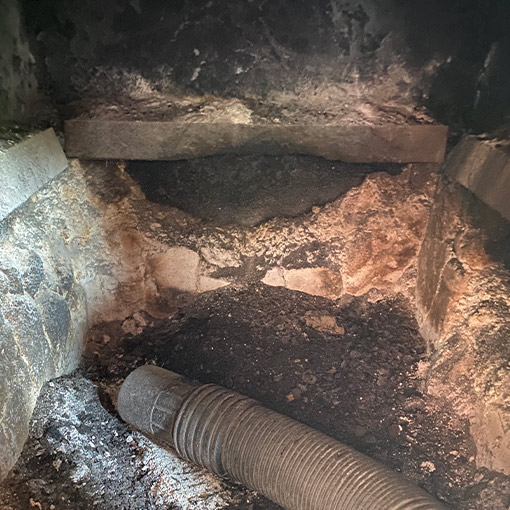
Be smart, your lungs should not breathe this gunk!
5 Essentials of Chimney Cleaning
Whether you decide to call in a professional or attempt your own chimney cleaning, there are a few essential elements to be aware of with this particular in-home chimney maintenance task.
1. Protect your Home with Floor Covering Tarps
Soot and creosote can be messy and cause damage to your rugs or carpets. Closing off the fireplace during chimney sweeping keeps dust from reaching the home. Expert chimney cleaners perform clean sweeps daily and know how to prevent a sooty mess in your home.
2. Protect the Technician
Both DIYers and Professional Chimney Cleaners alike should protect themselves from the mechanical and airborne hazards common in chimney maintenance. See the Safety concerns above for details on the hazards of cleaning a chimney flue.
3. Proper Equipment
For best results, modern chimney sweeping tools are essential. Rotary chimney brushes not only are faster but do a better job at removing soot and creosote from inside the flue. Assorted hand brushes clean the areas of the smoke chamber, damper, and firebox that the rotary brush cannot.
4. Inspection
The perfect time to evaluate the firebox, damper area, smoke chamber, and flue liner is after sweeping the flue. The chimney flue liner may be inspected with a flashlight to determine if it’s clogged. But to determine if it’s safe to burn in your fireplace, then a Level 2 video inspection with a chimney camera is required.
5. Document the Chimneys’ Condition
Recording the condition of safety and structure areas of your chimney gives you peace of mind. You’ll have a better understanding of the fireplace and be confident that it’s ready to use. If defects or damage is found, you will be able to make an informed decision regarding chimney rebuilding or repairs.
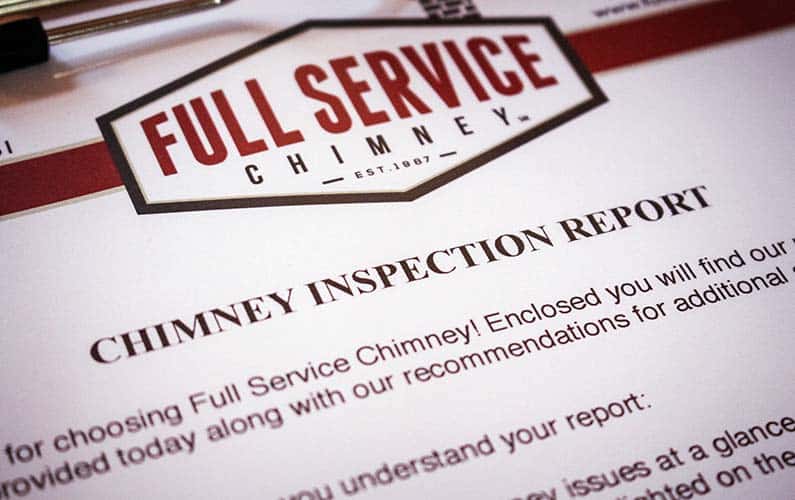
An official evaluation by a Certified Chimney Sweep is recommended yearly and is often required by insurance companies or if you try to sell your home. A regular record of chimney care and maintenance is critical.
When you get your cleaning and inspection with Full Service Chimney our technician will leave you with a detailed report and images showing what our high-resolution chimney cameras found after the cleaning.
What’s a Cleaning Without an Inspection?
No chimney cleaning is complete without a CSIA approved chimney inspection. The perfect time for an inside and out chimney inspection is at the time of cleaning.
After all, you’re getting your chimneys cleaned to remove creosote and reduce the risk of chimney fires. This is a step toward reducing the hazard of fire. The chimney inspection confirms the visible portions of your chimney are in proper order, further reducing the risk to home and family.
